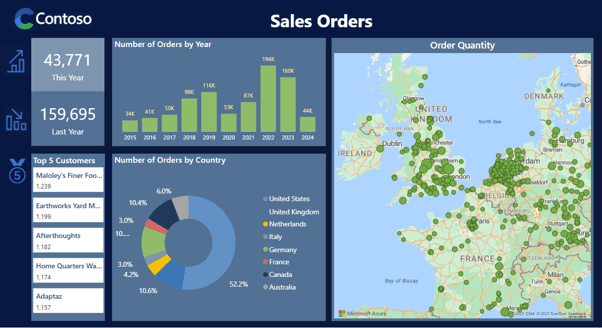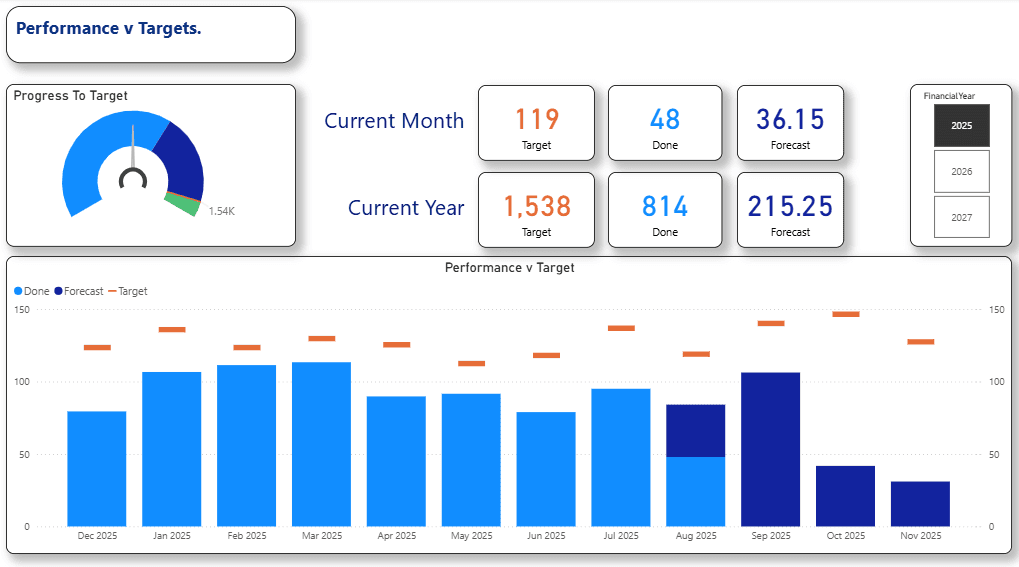Tech Tips
Enhancing Business Operations with Power Platform Integration
Introduction to Power Platform The ability for a business to be able to make data-driven decisions is becoming increasingly important with each passing day. As businesses strive to stay competitive, the integration of powerful tools like Microsoft's Power


Introduction
The ability for a business to be able to make data-driven decisions is becoming increasingly important with each passing day. As businesses strive to stay competitive, the integration of powerful tools like Microsoft's Power Platform and Power BI has become increasingly essential. This blog post aims to shed light on how these two formidable tools can work together to revolutionise your business operations and drive productivity.
Microsoft's Power Platform is a suite of business applications that allows users to analyse data, build solutions, automate processes, and create virtual agents. It's a robust platform that empowers businesses to turn ideas into organisational solutions. On the other hand, Power BI is a business analytics tool that delivers insights for analysing data, sharing insights, and offers impressive data visualisation capabilities. Together, these tools can provide a comprehensive solution to meet your business's data analysis and visualisation needs.
The integration of Power Platform with Power BI can open up new avenues for businesses to streamline their operations, make informed decisions, and ultimately drive growth. But how does this integration work, and what benefits can it bring to your business? This blog post will delve into these questions, providing a detailed understanding of the power of Power Platform and Power BI integration.
Understanding Power Platform and Power BI
What is Power Platform?
Microsoft's Power Platform is a game-changing collection of business tools, designed to give organisations the ability to fully utilise their data. It's a comprehensive suite that provides the means to delve into data analysis, streamline processes through automation, construct tailored solutions, and develop virtual agents, all within an intuitive environment.
The Power Platform is composed of four primary elements: Power BI, Power Apps, Power Automate, and Power Virtual Agents. Each of these elements contributes uniquely to enabling businesses to leverage their data effectively.
Power BI is an analytics tool that brings data to life through interactive visualisations and business intelligence capabilities. It provides a user-friendly interface that allows end users to craft their own reports and dashboards. This empowers businesses to extract insights from their data in a visually engaging and easily digestible manner.
Power Apps is a component of the platform that allows users to create customised applications to suit specific business requirements. It offers a platform that accelerates the application development process, enabling a wider range of business users to create professional-grade applications with minimal coding.
Power Automate, previously known as Microsoft Flow, is a service designed to help you establish automated workflows between your preferred apps and services. This can include synchronising files, receiving notifications, collecting data, and more. It's a potent tool for automating and enhancing business processes, thereby saving valuable time and resources.
Power Virtual Agents is a tool that enables teams to construct sophisticated chatbots using a guided, code-free graphical interface. These chatbots can engage in detailed conversations with users, assisting businesses in improving customer service and streamlining various business processes.
One of the standout features of Power Platform is its adaptability and capacity for integration. It's engineered to work smoothly with other Microsoft products, such as Office 365, Dynamics 365, and Azure, as well as a variety of third-party apps and services. This compatibility makes Power Platform a robust and flexible solution that can be tailored to the specific needs of any business.
What is Power BI?
Power BI, a crucial part of Microsoft's Power Platform, is a sophisticated tool designed to convert unprocessed data into significant insights. It's an analytics solution that enables you to visualise your data and distribute insights throughout your organisation, or incorporate them into an application or website.
Power BI is centred around making your data vibrant and interactive. It offers a platform for creating visual representations of data that users can interact with and explore, promoting a self-service approach to business intelligence. This means that it empowers individuals, regardless of their technical expertise, to generate their own reports and dashboards. It's a tool that democratises data, making it accessible and comprehensible to everyone within your organisation.
A distinguishing feature of Power BI is its capability to extract data from a diverse range of sources, from Excel spreadsheets and local SQL Server databases to cloud services like Azure SQL Database and Salesforce. This adaptability allows businesses to consolidate data from various sources and gain a comprehensive view of their operations.
Power BI is composed of several components that work in harmony, starting with Power BI Desktop, a Windows desktop application for crafting reports. Following this, there's the Power BI service, a cloud-based platform for publishing and distributing the reports created in Power BI Desktop. Lastly, there's Power BI Mobile, an application that provides access to your data while on the move.
But Power BI is more than just a tool for visualising data. It's a complete analytics solution that equips businesses to monitor their operations in real time, swiftly identify trends and patterns, and make decisions based on data. It's about transforming data into actionable insights and, ultimately, propelling business success.
The Power of Integration: Power Platform and Power BI
When Power Platform and Power BI come together, they form a dynamic duo that can significantly transform your business's relationship with data, leading to more insightful decisions and enhanced outcomes.
Think of it this way: Power Platform acts as the foundation, the place where your data is gathered, organised, and interpreted. Power BI, meanwhile, serves as your lens, offering a fresh perspective on your data. When you integrate these two, you're essentially connecting the foundation with the lens. This connection allows your data to flow seamlessly, ensuring that your Power BI visualisations are consistently updated and ready to deliver the insights you need.
But the beauty of this integration doesn't end at data visualisation. It also introduces the concept of real-time data analysis. Imagine a system that not only analyses your data but also keeps you in the loop as things change. With Power Automate, you can set up triggers that automatically update your Power BI dashboards when specific conditions are met. It's akin to having a reliable colleague who always keeps you updated about the latest business trends, enabling you to stay ahead and respond swiftly to changes.
And the cherry on top? This integration doesn't just provide insights - it enables you to act on them. With Power Platform's ability to create custom apps and automate processes, you can translate the insights from Power BI into tangible actions. Whether it's automating a routine task based on your data trends or initiating a new project based on your data insights, Power Platform and Power BI equip you with the tools to act decisively and effectively.
Implementing Power Platform and Power BI Integration in Your Business
So, you've decided that Power Platform and Power BI working together is right for your business; what next? How do I implement these products?
The first step towards integrating Power Platform and Power BI is to familiarise yourself with both tools. If you're not already using them, take some time to explore Power Platform and Power BI. Get used to their interfaces, play around with their features that you think would be of use in your business, and start to think about processes that you could improve upon using these products.
Once you are comfortable using the products, you'll need to assess your data.
Where's it coming from?
How is it structured?
How clean is it?
How could it be visualised to make sense to you and your team?
The main purpose of this integration is to turn your data into insights you can act on, so understanding your data is pivotal.
Now, here's where things get exciting - bringing Power Platform and Power BI together. This will look different for every business, but here are some general steps to get you started:
Gathering and Organising Data with Power Platform
Use Power Apps to build custom apps for collecting data, and Power Automate to make your data processes more efficient.
Analysing Data with Power BI
Bring your data from Power Platform into Power BI and start digging in. Use Power BI's tools to create interactive reports and dashboards that make your data come alive.
Setting Up Automation with Power Automate
Set up triggers in Power Automate that will keep your Power BI dashboards updated when certain conditions are met.
Taking Action
Use the insights you get from Power BI to make informed decisions. Remember, data is only as good as the actions it leads to.Bringing Power Platform and Power BI into your business isn't a one-size-fits-all process. It takes a clear understanding of your business's unique needs and a bit of trial and error. But stick with it, and you'll start to see the benefits of this powerful duo.
Power Platform Conclusions
As we reach the end of this exploration into the integration of Power Platform and Power BI, it's clear that these tools offer a powerful combination for businesses. They provide a comprehensive solution for handling data, from collection and analysis to visualisation and action, enabling businesses to make more informed decisions and achieve better outcomes.
The integration of Power Platform and Power BI is about more than just combining two tools - it's about creating a seamless data journey. It's about connecting the foundation where your data is gathered and organised (Power Platform) with the lens that offers a fresh perspective on your data (Power BI). This connection ensures that your data flows smoothly from one point to another, keeping your visualisations up-to-date and ready to deliver the insights you need.
But the beauty of this integration doesn't stop at data visualisation. It also brings real-time data analysis into the fore, keeping you in the loop as things change. With Power Automate, you can set up triggers that automatically update your Power BI dashboards when specific conditions are met. It's like having a reliable colleague who always keeps you updated about the latest business trends, enabling you to stay ahead and respond swiftly to changes.
And let's not forget the power to act on your insights. With Power Platform's ability to create custom apps and automate processes, you can translate the insights from Power BI into tangible actions. Whether it's automating a routine task based on your data trends or initiating a new project based on your data insights, Power Platform and Power BI equip you with the tools to act decisively and effectively.
So, are you ready to harness the power of Power Platform and Power BI integration in your business? If so, PTR can help . Get in touch to discuss how we can help you harness the Power of the Power Platform.
Share This Post
Brett Valentine-Dunn
Senior Business Intelligence Consultant
Brett has been working in data and analytics for a decade, and has helped many SMEs transform their businesses by harnessing the power of data and business intelligence.
Frequently Asked Questions
Couldn’t find the answer you were looking for? Feel free to reach out to us! Our team of experts is here to help.
Contact Us


